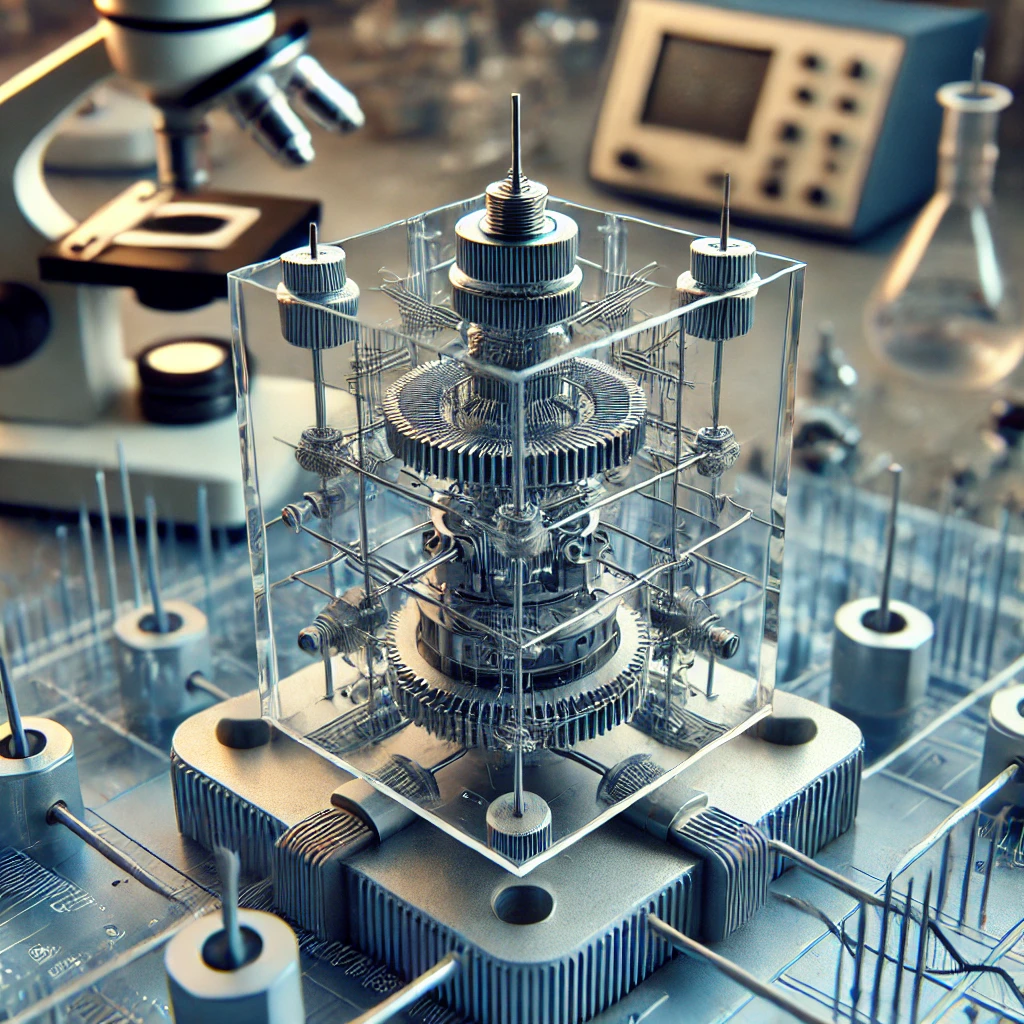Explain how a crystal oscillator uses the piezoelectric effect to detect minute changes in mass. When a substance sticks to a crystal oscillator, it changes its natural frequency, which allows for ultra-precise measurement of the mass of microscopic materials such as gas molecules or DNA. We also discuss its potential applications in a variety of fields, including measuring gas concentrations.
Scales typically weigh mass using the principle of leverage or by measuring changes in electrical resistance. But how do ultra-precise scales weigh gas molecules or microscopic materials like DNA? To answer this question, we need to understand the piezoelectric effect.
There are two types of piezoelectricity: primary piezoelectricity, in which mechanical strain on a material causes a voltage to be applied to the material, and secondary piezoelectricity, in which applying a voltage to a material causes mechanical strain on the material. Materials that exhibit both piezoelectric effects are called piezoelectrics, and crystals are a common example. Quartz is widely used as a piezoelectric because of its stability and accuracy. Because crystals maintain a constant structure and are less susceptible to external factors, they are well suited for precise measurements.

The crystal used as a piezoelectric is cut and machined in a specific direction to form a flat disk. Then, electrodes are made on both sides of the disk, and the crystal vibrates when a voltage is applied that alternates between the (+) and (-) poles. The frequency of the voltage is matched to the natural frequency of the crystal so that the crystal vibrates in a large range, making it easier to measure the vibration. The natural frequency is the unique vibration frequency of an object, which varies depending on the shape and size of the piezoelectric, even for piezoelectrics of the same material.
As the mass of a crystal oscillator increases, the frequency of the crystal oscillator vibrating at its natural frequency decreases. The frequency of a crystal oscillator is sensitive to very small changes in mass, making it possible to measure the mass of microscopic materials such as gas molecules or DNA. The mass sensitivity of a crystal oscillator is the amount of change in frequency divided by the measured mass, and the mass sensitivity of a crystal oscillator is very large.
The principle of mass measurement with a crystal oscillator can be applied to detect the concentration of a particular gas. When a crystal oscillator is treated with a specific gas, the gas adheres to it and changes its mass, causing the frequency of the crystal oscillator to decrease. At a certain point, the frequency of the crystal oscillator stops decreasing and remains constant. The reason for this constant value is that the specific gas does not adhere to more than a certain amount. The greater the concentration of a particular gas in the mixture, the smaller the frequency will remain constant. The measure of how quickly the gas sticks to the crystal oscillator and the frequency becomes constant is called the reaction time, and the shorter the reaction time, the faster the concentration of the gas can be determined.
However, it is difficult to measure the exact concentration of the target gas you want to measure if a gas other than the one you want to measure is attached to it, and it is not possible to know the concentration of the target gas even if only the target gas is attached. For this reason, it is necessary to measure the frequency change of the crystal oscillator according to the concentration of the target gas in advance. By dividing the frequency change of the crystal oscillator by the concentration, the sensitivity to concentration can be calculated.
As ultra-precise scales, quartz crystals are used in a variety of fields. For example, in the life sciences, they can be used to measure the concentration of specific proteins or DNA. In environmental science, they are useful for measuring the concentration of pollutants in the air, and in the medical field, they open up the possibility of measuring the concentration of certain viruses or bacteria in the blood in real time. Thanks to their sensitivity and accuracy, crystal oscillators are being used as innovative measurement tools in a variety of fields.
Furthermore, technological advances in crystal oscillators are being combined with nanotechnology to enable even more precise measurements. Nanotechnology allows for the fabrication of smaller vibrators, which are more sensitive to smaller mass changes. This means that crystal vibrators are expected to play an important role in many more fields in the future.
 I’m a blog writer. I want to write articles that touch people’s hearts. I love Coca-Cola, coffee, reading and traveling. I hope you find happiness through my writing.
I’m a blog writer. I want to write articles that touch people’s hearts. I love Coca-Cola, coffee, reading and traveling. I hope you find happiness through my writing.